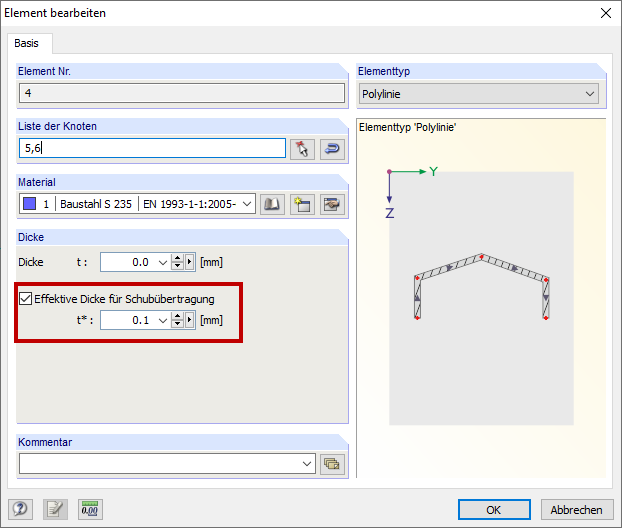Die Schubfläche wird wie folgt berechnet:
|
Iz |
Flächenmoment 2. Grades bezogen auf Achse z |
|
Sz |
Flächenmoment 1. Grades bezogen auf Achse z |
|
t* |
effektive Elementdicke für Schubübertragung |
|
A* |
Fläche basierend auf effektiver Schubdicke t* |
|
Iy |
Flächenmoment 2. Grades bezogen auf Achse y |
|
Sy |
Flächenmoment 1. Grades bezogen auf Achse y |
|
t* |
effektive Elementdicke für Schubübertragung |
|
A* |
Fläche basierend auf effektiver Schubdicke t* |
Die effektive Elementdicke für Schubübertragung t* hat einen wesentlichen Einfluss auf die Schubfläche. Daher sollte die definierte effektive Elementdicke für Schubübertragung t* (Bild 1) der Elemente überprüft werden.

